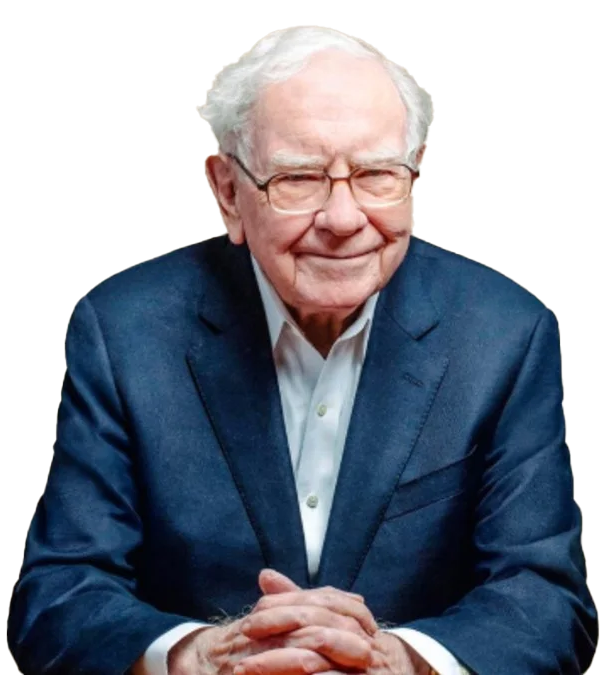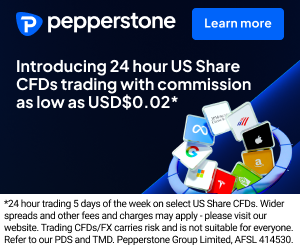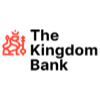ARTICLES
Find here our selection of best articles.
How to invest in Quantum Computing from Kenya
How do you catch the next big wave if you don’t speak “quantum”—and don’t plan to? Quantum computing is moving from labs into real pilots across drug discovery, finance, logistics, and cybersecurity. For investors, the payoff profile is asymmetric: modest capital can buy big optionality if fault-tolerant systems arrive on time. The risk is just as clear: long R&D cycles, technical bottlenecks, and profits that lag the hype. This article covers the full spectrum of quantum-related investments with practical notes for investors in Kenya.
INVEST IN QUANTUM STOCKS >
Scott Bessent vs UK's Sterling Pound
This is a real, data-driven account of Scott Bessent’s ascent from Yale graduate to a leading member of George Soros’s London team, the group that famously shorted the pound sterling in 1992. We explain how the ERM’s rigid rules, Germany’s high rates, and Britain’s weak growth set up an asymmetric trade; how execution across banks, forwards and options amplified the move; and how risk control—not bravado—kept the position solvent while the Bank of England fired its volleys. We then track Bessent through subsequent macro campaigns and into Key Square, before concluding with how that trader’s discipline translates into his present-day stewardship in public office. It’s the craft, not the legend—told plainly, with lessons you can use.
INVEST IN US STOCKS >
What Is the 5-Minute Scalping Strategy?
The five-minute chart offers a sweet spot for scalpers: fast enough to catch multiple opportunities each session, yet slow enough to filter out much of the noise that plagues one-minute trading. This strategy provides clearer setups, more time to plan entries, and slightly wider targets that balance risk and reward. In this guide, we’ll explore the basics of five-minute scalping, outline structured setups that traders use, and detail how to manage risk effectively on this timeframe.
LOWEST SPREAD FX BROKER >
What happened to the gold price?
Gold is not just a lonely chart: it is a barometer of global liquidity, geopolitical risk and monetary credibility. After a 52 per cent yearly rise, the metal saw a tactical 9 per cent correction within 72 hours following a 19 per cent gain in October 2025, then a 4 per cent rebound. Yet the underlying pillars remain firm: record central‑bank purchases (1,080 tonnes in nine months, +28 per cent vs 2022), negative real yields (‑0.8 per cent on the 10‑year) and de‑dollarisation (gold already equals 18 per cent of emerging‑market reserves; it was 11 per cent in 2018). This report places the short‑term noise within a long‑term trajectory, outlines structural engines and draws lessons from historical episodes to set levels, scenarios and strategy.
TRADE GOLD NOW >
Michael Reeves goldfish: the full story
When the phrase “Michael Reeves goldfish” started spreading across YouTube, Twitter and finance memes, it sounded like a throwaway joke: a chaotic coder letting a tiny orange fish YOLO its way through the stock market. Look closer, though, and the stunt was more than a punchline. It blended live streaming culture, algorithmic trading, behavioural finance and dark tech humour into one experiment perfectly suited to an age where retail investors swap charts and memes in the same breath. This guide unpacks who Michael Reeves is, how the goldfish trading rig actually worked, what risks were real versus for show, and what thoughtful investors, creators and curious onlookers can learn from a fish that briefly became the internet’s most infamous “portfolio manager”.
TRADE STOCKS NOW >
What Are WM/Reuters Benchmark Rates?
The WM/Reuters benchmark rates, often referred to as the WMR fix, are the backbone of global foreign exchange pricing. Published at set times each day, they provide a standard reference for currencies, allowing investors, corporates, and traders to price transactions and value portfolios consistently. The most influential of these is the 4 p.m. London fix, a moment that concentrates liquidity and often drives volatility. For anyone active in FX, understanding how these rates are calculated and used is essential.
LOWEST SPREAD FX BROKER >
Indicators for Analyzing a Stock Investment
Learn how to build a well-rounded stock portfolio with practical strategies and advanced tools. Understand metrics like Sharpe Ratio, Alpha, and PEG, and see how diversification and technical indicators can help you balance risk and boost returns, even in unpredictable markets.
INVEST IN STOCKS >

Libertex
Libertex is a broker with over 25 years of experience, regulated by CySEC and FSC. It operates with a commission

eToro

YouHodler

Plus500
Plus500 is a global broker founded in Israel, listed on the London Stock Exchange (LSE:PLUS) and part of the FTS

AMarkets

BlackBull

AvaTrade

Astropay

FXCM

Saxo Bank
How Do Gold Prices Impact Forex?
Gold is more than a commodity; it is a mirror of global sentiment and a counterweight to the U.S. dollar. For decades, shifts in the price of gold have rippled through currency markets, influencing everything from risk appetite to central bank reserves. Traders watch the metal’s swings closely, as they often hint at underlying pressures in exchange rates. This article explores how gold interacts with the dollar, why it acts as a safe haven, and how those links shape strategies in Forex.
INVEST IN GOLD >
What Happened to Palantir’s Share Price?
Palantir Technologies ($PLTR) delivered a blockbuster Q3 2025 earnings report, featuring 63% revenue growth, a 121% surge in U.S. commercial sales, and a record $540 million in free cash flow. Guidance was raised across the board, and the company reaffirmed its dominant position in AI-driven enterprise software. Yet, the share price tumbled over 7% the following day. Why? Ultra-high valuation multiples, broader market weakness, and bearish headlines—including a 13F disclosure from Michael Burry—sparked a “sell-the-news” reaction. While short-term traders ran for cover, long-term investors see the dip below $190 as a potential gift. Palantir remains one of the fastest-growing, most cash-rich tech companies in the world.
CHECK PALANTIR’S SHARE PRICE >
What happened with Meta's Stock?
Meta Platforms Inc. (META), the parent company of Facebook, Instagram, and WhatsApp, posted robust Q3 2025 financials on October 29. Revenue came in at $51.24 billion, surpassing analyst expectations, and core earnings remained healthy despite a one-time $16 billion tax charge. But the following day, META shares nosedived by 11.33%, closing at $666.47—the sharpest single-day drop in three years, wiping out nearly $190 billion in market value. Investor concerns centered around Meta’s increased capital expenditure guidance, especially for its aggressive AI infrastructure investments. Management warned that 2026 spending would rise “significantly faster,” alarming investors who fear margin compression and slower returns on these investments. While user growth on Threads and ad revenue from AI-driven tools remain strong, the market punished the lack of immediate profitability. Analysts remain optimistic long-term, but the near-term outlook is clouded by uncertainty around monetization. The earnings dip offered a reminder: in today’s AI arms race, strong numbers aren’t always enough.
CHECK OUT META'S PRICE >
Best Stock Brokers in Kenya
Looking to invest in Kenyan shares through a reliable and easy-to-use platform? This ranking highlights the most trusted brokers for trading local stocks, carefully tested on key parameters such as platform security, usability, transaction costs and quality of customer service. We paid special attention to liquidity on the Nairobi Securities Exchange and access to companies that Kenyan investors follow closely. The brokers listed here provide transparent, regulated, and cost-efficient ways to build long-term equity portfolios while supporting growth in the local capital market.
OPEN A DEMO ACCOUNT >
Best Global Stock Brokers in Kenya
Thinking about investing beyond the NSE? Our review of the best global stock brokers for Kenyan investors focuses on platforms that make it simple to access leading markets in the US, Europe and Asia. Alongside key factors such as safety, customer service and pricing, we also evaluated how these brokers handle currency conversion and the breadth of global equities available. For Kenyans looking to diversify across borders, these platforms offer the most seamless and secure gateways to international investing.
OPEN A DEMO ACCOUNT >
Best Bond Brokers in Kenya
Looking for steady returns through bond investing? This ranking of Kenya’s best bond brokers is built on transparency, reliability and cost-effectiveness. We examined access to both government and corporate bonds, the range of maturities available, and clarity in yield information. For investors focused on income stability, these brokers make fixed-income products more approachable, offering dependable tools to manage debt instruments safely within the Kenyan financial framework.
OPEN A DEMO ACCOUNT >
Best ETF Brokers in Kenya
Wondering which brokers make ETF investing easiest in Kenya? The top ETF brokers featured here were evaluated for their security standards, user experience, fees and quality of support. We also looked at the diversity of ETFs offered — from sector-focused funds to major global indices — and the strength of their trading tools. For Kenyan investors, these brokers make diversification affordable and efficient, helping portfolios grow through exposure to both local and international markets.
OPEN A DEMO ACCOUNT >
Best Futures Brokers in Kenya
Curious about how futures trading works in Kenya? Our analysis of the best futures brokers highlights platforms that excel in both reliability and innovation. We reviewed costs, security, margin requirements, execution speed and variety of available contracts. Designed for investors who want to hedge risk or take advantage of movements in commodities and indices, these brokers provide the technological strength and transparency Kenyan traders need to operate confidently in futures markets.
OPEN A DEMO ACCOUNT >
Best JSE All Share Index Brokers in Kenya
The best brokers for the JSE All Share Index provide Kenyan investors with a route for regional diversification into the South African market. We evaluate cost efficiency, platform stability, and the reliability of the investment vehicle (ETFs or CFDs) for accessing the largest African stock exchange.
OPEN A DEMO ACCOUNT >
Best S&P/ASX 200 Index Brokers in Kenya
The top brokers for the S&P/ASX 200 Index enable Kenyan investors to access the Australian market. Our assessment looks at minimizing FX conversion costs (KES to AUD) and ensuring platform reliability for trading in the Oceanic time zone, facilitating seamless international diversification.
OPEN A DEMO ACCOUNT >
Best Hang Seng Index Brokers in Kenya
The best Hang Seng Index brokers provide low-cost and reliable access to the Hong Kong market for Kenyan investors. We prioritize platforms with minimal transaction costs, reliable real-time data, and smooth currency conversion, ensuring Kenyan traders can participate in this key Asian market efficiently.
OPEN A DEMO ACCOUNT >
Best FTSE 100 Index Brokers in Kenya
The best FTSE 100 brokers for Kenya focus on competitive trading conditions for this major UK index. Our criteria include tight spreads and ensuring efficient FX conversion processes (KES to GBP), making it cost-effective for Kenyan traders to gain exposure to the performance of leading British companies.
OPEN A DEMO ACCOUNT >
Best SSE Composite Index Brokers in Kenya
The top brokers for the SSE Composite Index provide compliant and reliable routes for indirect investment in the mainland Chinese market (Shanghai). We assess the reliability of the investment product (ETFs or funds) and the overall cost transparency, catering to Kenyan investors seeking diversified China exposure.
OPEN A DEMO ACCOUNT >
Best Nikkei 225 Index Brokers in Kenya
To access the Japanese market, the best Nikkei 225 brokers for Kenya offer competitive trading fees and rapid execution for CFDs or Futures. Our focus is on platforms that facilitate seamless trading across time zones, enabling Kenyan investors to effectively diversify into Asia's second-largest economy.
OPEN A DEMO ACCOUNT >
Best EURO STOXX 50 Index Brokers in Kenya
For exposure to Europe's leading companies, we rank brokers providing access to the EURO STOXX 50. Key factors include minimizing the total cost of ownership (low management fees on ETFs or tight spreads on CFDs) and ensuring platform reliability, making it efficient for Kenyan investors to tap into the European blue-chip market.
OPEN A DEMO ACCOUNT >
Best S&P/TSX Index Brokers in Kenya
The best brokers offering the S&P/TSX Composite Index allow Kenyan investors to diversify into the Canadian market. Our evaluation considers the efficiency of FX conversion (KES to CAD) and the overall market depth and liquidity of the available investment vehicles (ETFs or CFDs).
OPEN A DEMO ACCOUNT >
Best VIX Index Brokers in Kenya
Advanced Kenyan traders seeking to hedge portfolios or speculate on market fear require the best VIX brokers. Our ranking assesses platforms based on their offering of VIX-related CFDs, Futures, or Options, prioritizing transparent margin requirements and the availability of sophisticated risk management tools essential for navigating market volatility.
OPEN A DEMO ACCOUNT >
Best NASDAQ Index Brokers in Kenya
For technology-focused Kenyan investors, the top NASDAQ brokers offer access to the NASDAQ 100 with competitive spreads and advanced trading technology. We prioritize brokers with high-quality mobile and web platforms that ensure fast, reliable execution, enabling traders to capitalize on trends in the global tech sector.
OPEN A DEMO ACCOUNT >
Best Dow Jones Index Brokers in Kenya
The best Dow Jones brokers for Kenyan investors deliver low-cost access to the DJIA, typically via CFDs or ETFs. Key evaluation criteria include overall trading costs and platform stability, which is crucial during fast-moving U.S. market hours, allowing Kenyan traders to effectively track and trade America's most established blue-chip companies.
OPEN A DEMO ACCOUNT >
Best S&P 500 Index Brokers in Kenya
To gain crucial exposure to the U.S. market, Kenyan investors rely on platforms offering competitive access to the S&P 500. Our ranking focuses on brokers that minimize FX conversion costs (KES to USD), offer tight index spreads, and ensure reliable execution across available investment vehicles (CFDs, ETFs, etc.), providing an efficient gateway to American corporate performance.
OPEN A DEMO ACCOUNT >
Best Indices Brokers in Kenya
Want to trade or track major indices with accuracy? This ranking of the best index brokers in Kenya identifies platforms offering reliable access to benchmarks like the NSE 20 Share Index, as well as key global indices such as the S&P 500 and FTSE 100. We considered safety, data integrity, pricing clarity and ease of use. These brokers give Kenyan investors dependable tools to follow market sentiment, analyse trends and execute index-based strategies within a regulated environment.
OPEN A DEMO ACCOUNT >
Best Options Brokers in Kenya
Thinking about trading options but unsure where to start? The top options brokers in Kenya were evaluated on security, pricing transparency and quality of customer support. We also assessed their range of strike prices, contract durations and availability of strategy-building tools. For Kenyan traders, these brokers make it possible to use options for hedging or speculation with full clarity on risk and reward, supported by platforms that emphasise education and control.
OPEN A DEMO ACCOUNT >
Best Forex Brokers in Kenya
Searching for the most trusted Forex brokers in Kenya? This ranking highlights brokers that combine tight spreads, fast execution and dependable support with strong regulatory oversight. We examined leverage options, range of currency pairs and compatibility with the Kenyan shilling (KES). For traders looking to tap into the world’s most liquid market, these platforms provide transparent, secure and well-equipped environments for effective FX trading.
OPEN A DEMO ACCOUNT >
Best Gold Brokers in Kenya
Gold is a vital asset for hedging against local currency depreciation. We assess brokers providing secure access via physical metal, dedicated ETFs, or leveraged CFDs. Key factors include the security of custody, competitive transaction costs, and deep liquidity, making these platforms ideal for wealth preservation in Kenya.
OPEN A DEMO ACCOUNT >
Best Oil Brokers in Kenya
The top oil brokers for Kenya provide seamless access to major global crude oil benchmarks (WTI and Brent). Our ranking assesses platforms based on their ability to offer tight, stable spreads, reliable execution during volatile events, and clear, flexible margin options. These brokers are crucial for Kenyan traders looking to capitalize on, or hedge against, global energy price fluctuations.
OPEN A DEMO ACCOUNT >
Best Agri-Commodities Brokers in Kenya
Kenya is a major player in agricultural exports. The best agri-commodities brokers for Kenyan investors offer robust access to international softs and grains markets. We prioritize competitive pricing, speed of execution, and specialized charting tools, enabling Kenyan traders to manage exposure to commodities closely tied to the local economy.
OPEN A DEMO ACCOUNT >
Best Commodities Brokers in Kenya
Wondering how to trade commodities like gold, oil, coffee or agricultural products? Our review of Kenya’s best commodity brokers highlights platforms that deliver security, affordability and usability. We assessed coverage across key sectors, liquidity, and access to hedging tools. These brokers connect Kenyan investors to real assets tied to the nation’s core exports and consumption trends, offering clear opportunities for diversification and protection against inflation.
OPEN A DEMO ACCOUNT >
Best Altcoin Brokers in Kenya
The best Altcoin platforms for Kenya cater to investors seeking high-growth digital assets. We rank brokers based on token diversity, transparent fee schedules (especially for withdrawals), and advanced security measures, allowing Kenyan investors to explore the wider crypto market safely and with clear pricing.
OPEN A DEMO ACCOUNT >
Best Ethereum Brokers in Kenya
The top Ethereum platforms for Kenyan users offer competitive spreads and reliable trading environments for ETH. Our comparison emphasizes technological infrastructure, the availability of features like staking, and overall compliance with local financial guidelines, ensuring a well-supported and secure experience.
OPEN A DEMO ACCOUNT >
Best Bitcoin Brokers in Kenya
With growing digital adoption, the best Bitcoin platforms for Kenya combine high security with compliance. We evaluate them based on wallet safety, transparent fee structures, efficiency of KES deposits and withdrawals, and alignment with local financial sector guidelines, providing a secure pathway for Kenyan investors to engage with BTC.
OPEN A DEMO ACCOUNT >
Best Cryptocurrency Brokers in Kenya
Interested in trading Bitcoin or Ethereum but want a safe, regulated option? Our ranking of Kenya’s best crypto brokers focuses on platforms that combine strong security, fair pricing and reliable support with cutting-edge crypto features. We reviewed wallet safety, token variety and transaction speed to find the most trusted choices. These brokers allow Kenyan investors to explore the growing digital asset market with confidence, balancing innovation with the safeguards needed in today’s fast-changing environment.
OPEN A DEMO ACCOUNT >
Best Apps for Investing in German Stocks
Discover our top-ranked platforms for trading German stocks, tailored for investors looking for access to the largest and most dynamic stock market in the world. We emphasise providers that offer a wide range of German stocks and strategic trading tools.<
TRADE GERMAN STOCKS NOW >
Best Brokers for Investing in Canadian Stocks
Discover our top-rated platforms for trading Canadian stocks, designed for investors seeking access to the largest and most dynamic stock market in the world. We emphasise providers offering a wide range of Canadian stocks and strategic trading tools.
TRADE CANADIAN STOCKS NOW >
Best Brokers for Berkshire Stock
Discover our top-rated platforms for trading U.S. stocks, designed for investors seeking access to the largest and most dynamic stock market in the world. We emphasise providers that offer a wide portfolio of U.S. stocks and strategic trading tools.
TRADE LIKE WARREN NOW >
Best Brokers for Investing in eSports Stocks
Discover the best platforms to trade esports stocks in our ranked guide. We focus on brokers that offer access to this fast-growing sector, competitive terms, and market insights to trade in esports companies.
TRADE ESPORTS STOCKS NOW >
Best Brokers for Investing in Space Stocks
Elevate yourself in our ranking of the best platforms to invest in space exploration stocks, highlighting the brokers that offer access to this emerging sector with robust trading tools and market insights.
TRADE SPACE EXPLORATION STOCKS NOW >
Best Brokers to Invest in JPMorgan Stock
Discover our top-rated platforms for trading U.S. stocks, tailored for investors seeking access to the largest and most dynamic stock market in the world. We emphasise providers that offer a broad portfolio of U.S. stocks and strategic trading tools.
TRADE JPMORGAN SHARES NOW >
Best Artificial Intelligence Stock Brokers
Our ranking of the best platforms for trading artificial intelligence stocks is essential for tech-savvy investors. We highlight brokers that provide access to leading AI companies and offer innovative tools to make informed stock trading decisions.
TRADE AI STOCKS NOW >
Best Brokers for Investing in Nvidia Stock
Dive into our ranking of the best platforms to trade NVIDIA stock, highlighting brokers that offer comprehensive stock trading tools and insights. This is ideal for experienced traders and newcomers interested in investments in technology stocks.
TRADE NVIDIA STOCK NOW >












